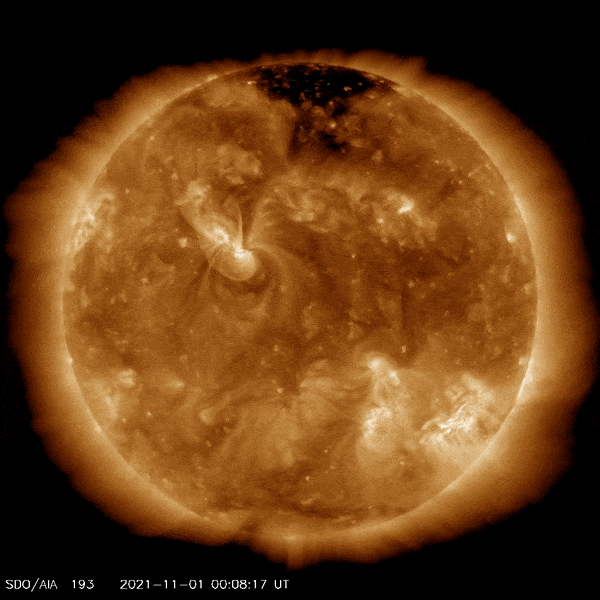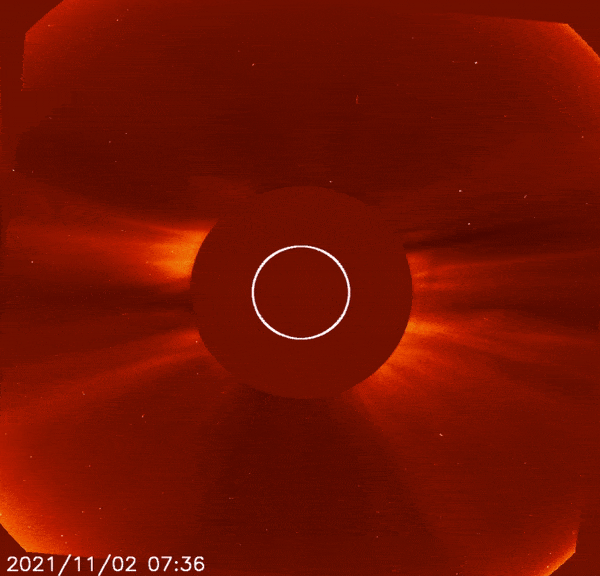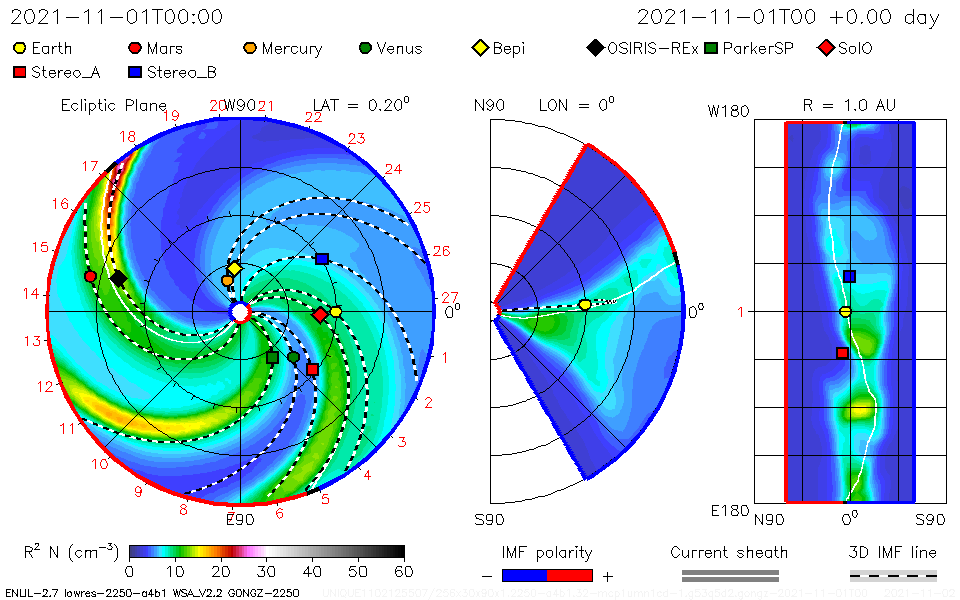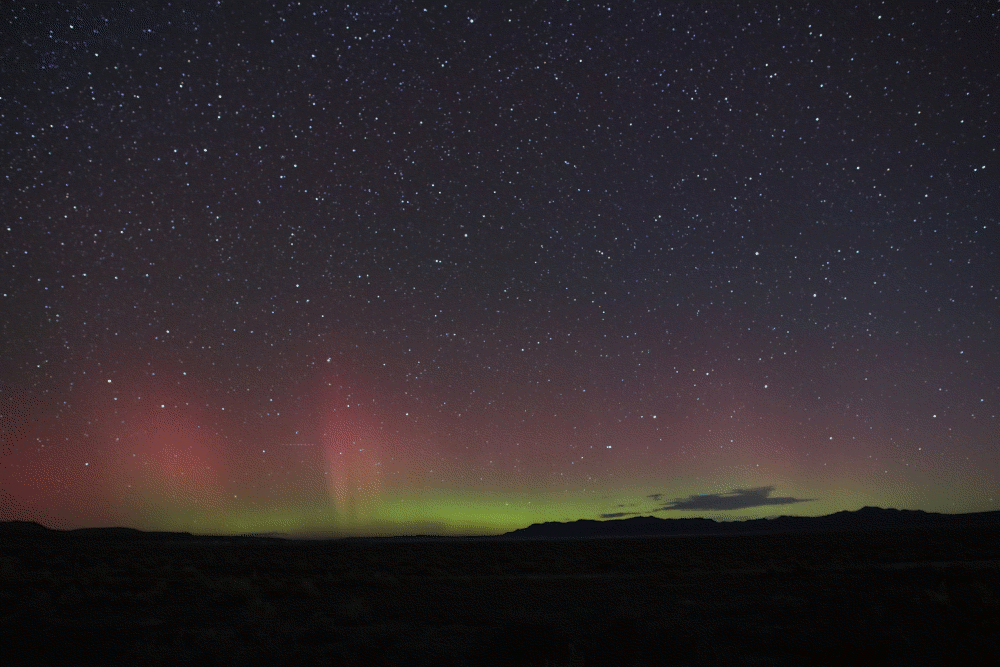From a flash on the Sun to a glimmer in the sky, last week’s solar storms illustrated the connection between the Sun and Earth. Three solar eruptions made their journey to Earth, culminating in aurora borealis, or northern lights, visible as far south as Utah.
It began with two active regions on the Sun – places where the Sun’s magnetic field is especially intense. All the active regions present on the Sun on Nov. 1 are shown below on a magnetic map of the Sun created by the Helioseismic and Magnetic Imager (HMI) instrument aboard NASA’s Solar Dynamics Observatory. Pay special attention to Active Region (AR) 12887, toward the bottom right, and AR 12891, near the middle of the Sun.

On Nov. 1, AR 12887 erupted with a C1.3-class flare, reaching peak brightness at about 2 p.m. EDT. (Solar flares are divided into A, B, C, M and X-classes, each class ten times stronger than its predecessor. The number provides more information about its strength: A C2 is twice as intense as an C1, a C3 is three times as intense, etc.
Classes A through C typically have little to no effect on Earth.) Three hours later, an even brighter C4-class flare followed; two hours after that, an M1.6-class flare erupted from AR 12891 towards the center of the Sun. The Solar Dynamics Observatory’s Atmospheric Imaging Assembly instrument captured images of each flare at 193 Angstroms, a wavelength that highlights hot solar material more than a million degrees Fahrenheit.

These flares were not strong enough to have noticeable impacts on Earth. But even weaker solar flares sometimes coincide with coronal mass ejections, or CMEs – bursts of solar material that escape the Sun and spill out to space – which can still have impacts, as these did.
The European Space Agency/NASA’s Solar and Heliospheric Observatory, or SOHO mission, stationed at the first Lagrange point where forces from the satellite motion and the Sun and Earth’s gravity balance, carries an ideal instrument for detecting CMEs. This instrument, called a coronagraph, blocks the Sun’s bright surface to reveal its faint corona, or outer atmosphere, where solar eruptions are more easily spotted. In SOHO’s imagery from the event, the CMEs following each flare appear like clouds of smoke issuing from the Sun.

Scientists at NASA’s Moon to Mars Space Weather Office retrieved the spacecraft data and entered it into a model to simulate the likely path of the CMEs. The simulation, shown below, depicts the Sun at the center, marking the current locations of several planets and spacecraft. Earth appears as a yellow dot at 3 o’clock.

The simulations suggested that the three CMEs would blend together, creating a shockwave headed towards Earth and expected to arrive sometime late on Nov. 3 or early on Nov. 4.
Earth’s magnetic field and thick atmosphere protects its surface (and us) from most effects of solar eruptions. But the highest layers of our atmosphere can undergo many changes. As a CME collides with Earth’s magnetic field, it can generate geomagnetic storms: disturbances to Earth’s magnetic environment that have a variety of impacts, including the northern and southern lights.
By 5 p.m. EDT on Nov. 3, the shockwave had arrived. Magnetometers across the planet registered a Kp index – a measure of disturbance to Earth’s magnetic field – of 7, corresponding to a strong geomagnetic storm. Kp index levels range from 0 (quiet) to 9 (intense).
In the early morning hours of Nov. 4, aurora watchers across the Northern Hemisphere documented the results. The animated gif below shows the aurora over Utah, captured by NASA JPL producer Bill Dunford on Nov. 4 between 1:30-1:42 a.m. MDT.

This geomagnetic storm is now over, but as Solar Cycle 25 picks up and the Sun becomes more active, there is sure to be more.
To see how such space weather may affect Earth, please visit NOAA’s Space Weather Prediction Center https://spaceweather.gov/, the U.S. government’s official source for space weather forecasts, watches, warnings, and alerts. NASA works as a research arm of the nation’s space weather effort. NASA observes the Sun and our space environment constantly with a fleet of spacecraft that study everything from the Sun’s activity to the solar atmosphere, and to the particles and magnetic fields in the space surrounding Earth.
By Miles Hatfield
NASA’s Goddard Space Flight Center, Greenbelt, Md.
